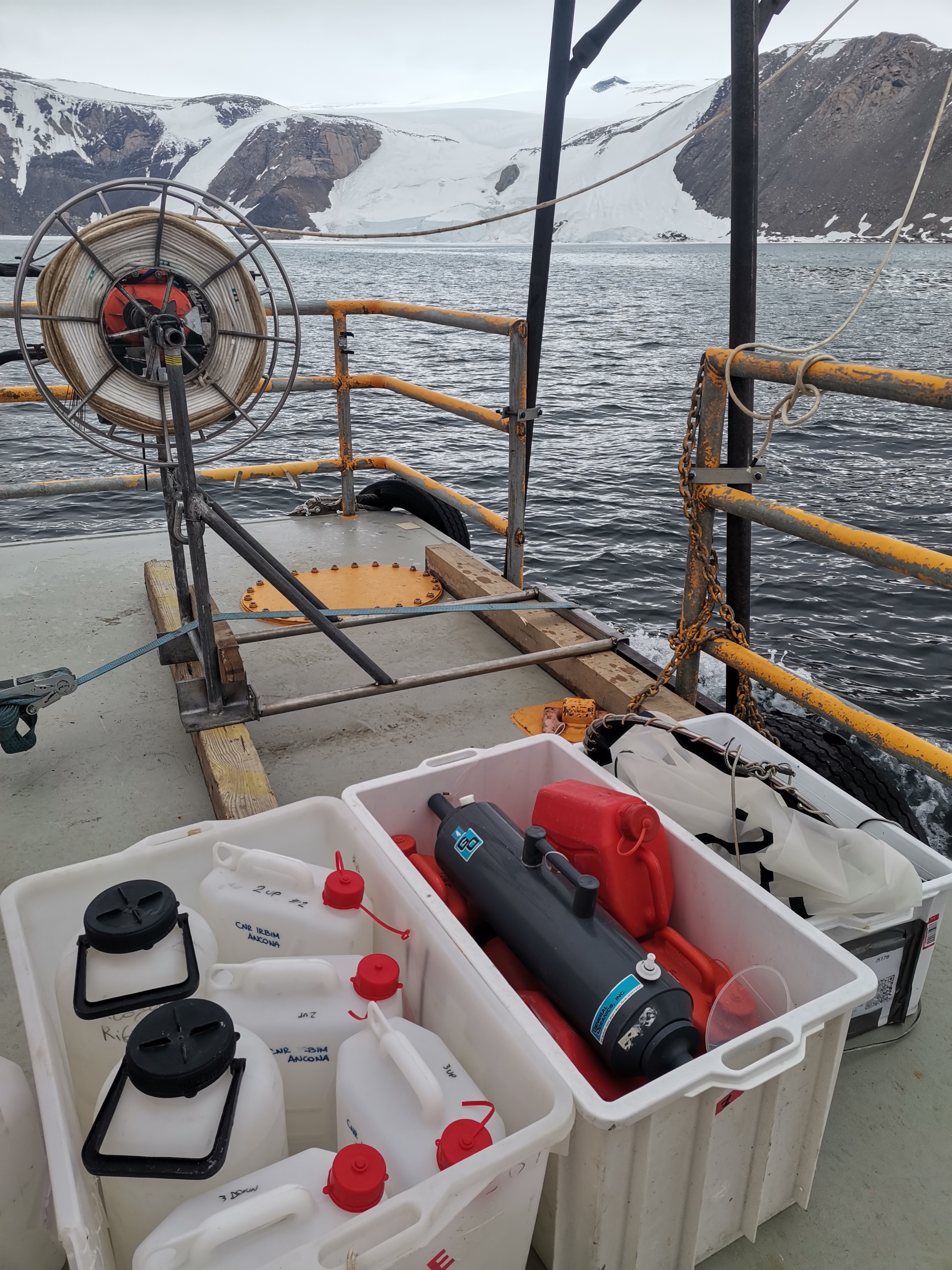Sea regions
Type of resources
Available actions
Topics
INSPIRE themes
Keywords
Contact for the resource
Provided by
Years
Formats
Representation types
Update frequencies
status
Scale
-
.jpg)
Commandant Charcot. Italian National Research Council - Institute of Polar Sciences data from a local source.
-

The effects of sea ice melting, and the consequent changes in the trophic conditions in Antarctic ecosystems, have been focused on phytoplankton with cross-food web links from krill to penguins, while the consequences on the planktonic microbial food web (viruses, prokaryotes and unicellular eukaryotes), driving biogeochemical cycles, have been largely ignored. This research investigates how changes related to sea ice melting influence the diversity and functioning of planktonic microbes in the Ross Sea coastal ecosystem of Terranova Bay. The objectives are: i) to investigate the temporal changes of planktonic microbial biodiversity, ii) to investigate the biodiversity/ecosystem functioning relationships iii) to assess the role of viruses on biodiversity and biogeochemical cycles, iv) to identify the drivers that shape microbial biodiversity and functions, and v) to shed light on the interactions within the planktonic food web, and their response to the ice melting. META-ICE-ROSS integrates ad hoc sampling with sophisticated methodologies of high-throughput sequencing of microbial DNA (metagenomics), never documented in previous Italian expeditions at Terranova Bay. The sampling includes the collection of seawater beneath the pack ice at increasing distance from the MZ Station and characterised by different thermohaline conditions, on a weekly basis from early November to mid January. The groundbreaking nature of META-ICE-ROSS will allow to provide unprecedented evidences on the role of microbial interactions in the functioning of the Ross Sea coastal ecosystem, to improve knowledge on biological changes due to global climate changes and, nonetheless, to provide a baseline assessment of the functioning of the microbial food webs and carbon sequestration in the pelagic environment in the Ross Sea region, within the context of the Ross Sea Region Marine Protected Area (RSRMPA) and its monitoring and research plan.
-
ISMAR_AN95 (?) ORA di BAIA TERRA NOVA ctd dicembre 1994 - CTD casts in the Ross Sea Station AN94043 - AN94045 - AN94046 - AN94047 - AN94048 - AN94049 - AN94050 - AN94051 - AN94052 - AN94053 - AN94054 - AN94055 - AN94056 - AN94057 - AN94058 - AN94059 - AN94060 - AN94061 - AN94062 - AN94063 - AN94064 - AN94065 - AN94066 - AN94067 - AN94068 - AN94069 - AN94070 - AN94071 - AN94072 - AN94073 - AN94074 - AN94075 - AN94076
-

CTD Casts in the Ross Sea 1996 Station AN96001 - AN96002 - AN96004 - AN96005 - AN96007 - AN96008 - AN96009 - AN96010 - AN96012 - AN96013 - AN96015 - AN96016 - AN96017 - AN96018 - AN96019 - AN96020 - AN96021 - AN96022 - AN96023 - AN96024 - AN96025 - AN96026 - AN96027 - AN96028 - AN96029 - AN96030 - AN96031 - AN96032 - AN96033 - AN96034 - AN96035 - AN96036 - AN96037 - AN96038
-

ORA di BAIA TERRA NOVA ctd dicembre 1994 - CTD casts in the Ross Sea Station AN94043 - AN94045 - AN94046 - AN94047 - AN94048 - AN94049 - AN94050 - AN94051 - AN94052 - AN94053 - AN94054 - AN94055 - AN94056 - AN94057 - AN94058 - AN94059 - AN94060 - AN94061 - AN94062 - AN94063 - AN94064 - AN94065 - AN94066 - AN94067 - AN94068 - AN94069 - AN94070 - AN94071 - AN94072 - AN94073 - AN94074 - AN94075 - AN94076
-

The RESTORE project is dedicated to the development of portable robotic technologies with the capability to perform multi-disciplinary multi-parametric 3-D monitoring of marine environment. Its primary focus lies in examining critical areas such as the air-sea-ice and water-sediment interfaces in Antarctica. This endeavour aims to support various research aspects, including the study of microbial ecology and DNA tracing, as well as the investigation of Antarctic geology, particularly the dynamics surrounding glaciers and ice-covered coastal regions. Furthermore, RESTORE is committed to scrutinising the impacts of climate change on the Antarctic atmosphere and the exchanges that occur between the sea and air. The comprehensive dataset collected during RESTORE will provide researchers with a holistic perspective on an extreme and remote environment such as Antarctica, facilitating the interpretation of atmospheric and oceanic dynamics at the interface zones and, the 3D mapping of the underwater environment and the physical characterisation of the sampled region.